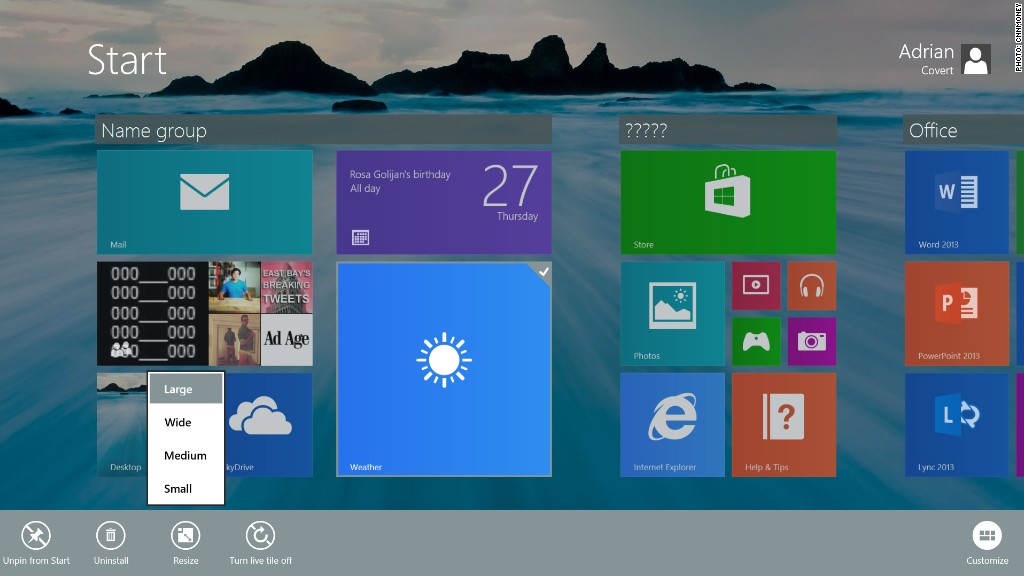
Windows 8 is chock-full of good ideas, but the execution is still lacking at times. As Windows 9 rumors swirl, here are five things we'd like to see Microsoft include.
More layout flexibility: Windows 8's "snap widgets" essentially serve the same function as old-school windows in desktop mode. Snap widgets make productivity easier on tablets, allowing users to go back and forth between windows. But there is a lot of room for refinement.
Being able to divide widgets into smaller tiles that could be arranged horizontally or vertically along a grid could help users go in and out of various apps much more seamlessly. And being able to quickly take an app into full screen mode and back would go a long way towards making the Windows layout feel less claustrophobic.
Desktop-only mode: Although the Windows 8 tile display is adequate on a standard laptop, it's still not optimal for productivity tasks, particularly on a desktop computer. There are also many apps that only work in desktop mode. The abrupt move between Windows 8's starkly contrasting tile and desktop environments has left a bad taste in the mouths of many users.
Related: Microsoft's Surface 2 still falls short
In Windows 9 -- or whatever the next big revision of Windows will be called -- users will be able to run those "Modern" apps in a window on the desktop, according to WinSuperSite's Paul Thurrott. If Microsoft also gave users the ability to lock their computers in desktop mode, that would help make the experience of using Windows on a laptop feel more consistent.
Microsoft shouldn't give up on the Start Screen, but some users just don't need it.
More consistent trackpad standards: Sometimes it seems like the trackpad on every single Windows 8 device feels different, making use of clicks and gestures in different ways.
For example, unlocking the homescreen requires a swipe on some trackpads, and a click on others.
At their best, exemplified by Logitech's standalone Windows 8 trackpad, gestures in Windows 8 are as quick and intuitive as touching a screen. At their worst, ironically exemplified by Microsoft's Surface tablet, gestures can be incredibly frustrating.
If the next version of Windows could standardize the trackpad experience, it could go a long way towards making Windows more usable.
Better Display Handling: One of the biggest problems facing Windows 8 is its inconsistent display settings. When connecting a PC to larger, more pixel-dense resolutions, settings that look good in tile mode don't look so great in desktop mode and vice versa. A second display only makes things more complicated.
And that's before you consider the super-HD screens that PC makers are starting to use. Even if you manage to find a sweet spot, some settings will frequently revert back.
If Microsoft really wants customers to love its new approach to Windows, the display has to look good in any mode, and on any device.
More interactivity with Windows Phone and Xbox: Windows 8, Windows Phone 8 and the Xbox One software are all built on top of the same foundation. They also share a suite of services and utilities that should function as a glue that binds each product. Yet, the overlap between the experiences on these devices is still lacking.
Buying an app on Windows Phone doesn't mean you automatically have access to the corresponding Windows app. If you start a Skype conversation on your computer, there's no way to push it over to your phone. While there is basic functionality for streaming video from a Windows 8 device to the Xbox, it's often unreliable or half-baked.
Multiplayer games have the potential to simultaneously span phones, tablets, computers, and consoles. Few companies are in a better position to facilitate this than Microsoft, but for now, the idea lies dormant.
Being able to intuitively share media or move your work between devices should be a big consideration in the next era of Windows.

